Lipsey’s Ruger Flattop .44 Special Bisley Revolvers
by Ross Seyfried
(With hints on: bullets, high performance reloads and firelapping for extreme accuracy.)
As many of you know Lipsey’s is a large firearms wholesale company in Baton Rouge, LA. They have a history of creating interesting and useful limited edition firearms and before us is one of the best and most interesting I have encountered. The guns are flattop target Bisley-Blackhawk revolvers reminiscent of the good old days and are chambered for one of the most wonderful cartridges of all time, the .44 Smith & Wesson Special. Said another way, they are guns that Elmer Keith, Skeeter Skelton and perhaps even Bill Jordan would have gone to a lot of trouble to own. Beyond, they are very close facsimiles of what I think is the finest revolver ever created, Elmer Keith’s No. 5 Colt.
What makes these revolvers so unusual, rare and wonderful is the combination of all three of these features: .44 Special, flattop target and Bisley. With these things we have a wonderful cartridge housed in an elegant target-sighted frame, with the Ruger “Bisley” grip; that to me is the most efficient and shootable revolver grip ever made. It is extremely close to Elmer’s wonderful No. 5. With that I realize many of you are not familiar with this revolver, so we will set the stage.
The No. 5 Colt was as its name suggests the fifth iteration of Harold Croft’s highly modified Colt revolvers. The first four were Croft’s designs and called “Featherweights.” After experimenting with these Elmer made final design changes to create what was in his mind the perfect revolver. If you are intrigued and want to read the whole story it can be found in the April 1929 edition of The American Rifleman. It is in essence a hybrid of the standard Colt SAA and the Bisley, with some extraordinary custom modifications. The gun dates to the 1920s and began life as a standard Colt SAA revolver. Some extensive welding was done on the frame, which is remarkable in itself. There were no fancy TIG or laser welders way back then. R.F. Sedgley welded the frame to create a flat-top and also had to do some very tricky welding on the front of the frame for the special base pin latch and on the back for the unusual grip. That all of this was done with a oxy-acetylene torch, that there are no pits or imperfections and the color of the blue is perfect in every respect; well this gentleman would quality as the most grand of grand master welders! The rear sight is adjustable for windage and the front for elevation, not unlike a the system on a Colt Woodsman. That base pin latch is a little lever that actually cams into the base pin, eliminating either the troublesome black-powder screw or the unreliable spring loaded cross pin found on modern versions. Elmer had him modify the trigger, so it was more curved and wider than the standard SAA trigger. The hammer was one done by J.D. O’Mera, with a modification popular with pistoleros of the day; a Bisley spur dovetailed into the existing SAA hammer. Then truly germane to our Rugers is the grip frame on No. 5. You can see the photo of the tracing of No.5’s grip beside the Ruger Bisley stock. Bill Ruger Sr. and Elmer were good friends and I have no doubt that Mr. Ruger was looking at No. 5 when he designed his Bisley. It is in essence a Colt SAA front strap married to a Bisley backstrap. The Lipsey .44 Specials are essentially No. 5 Colts; with a larger frame and overall strength unknown in Elmer’s day.
The Lipsey guns come with your choice of 4 5/8” or 5 ½” barrels. I had both to test drive and while my favorite single action barrel length is 5 ½ inches I found the slighter shorter version just as easy to hit with and perhaps a little more friendly to carry. The point is, there is not better or worse, both lengths are fine; the one for you is simply a matter of personal preference.
With the guns in hand it is time to shoot them; at first “out of the box” and then to investigate their dimensions and to begin to maximize their accuracy and performance. I confess a sort of kid in the candy store feeling when I opened the boxes with the new .44s in them. I took one, swabbed the oil out of the bore and chambers, loaded it with some factory Winchester 200 grain loads and pointed it at my most convenient target; a 4-foot square steel plate at 100 yards. An odd choice for a new revolver test, but it is just a thing I do. To my chagrin the first three shots missed the plate completely. The first two were mystery-misses with wet ground and tall grass all around the target. But the third tossed up a piece of mud well left of the plate, but was centered up and down. Then I bothered to look at the back sight instead of through it. The Micro sight was screwed completely to the left of its adjustment range. I clicked it to the center and reloaded the revolver. This time I took deadly aim at my pig silhouette that stands beside the big plate . . . clang, five out of six shots hit the pig. Admittedly I used every square inch of him with the “group,” but it was a very auspicious beginning. I tried the 5 ½” barrel with very similar results. When you can take relatively short barreled hunting revolvers out of their boxes and kill a hog, off hand, at 100 yards almost every time, with factory ammunition you really have something.
While I was shooting the guns I discovered one very interesting and new (at least new to me) feature of these current Blackhawk frames. This is a subtle little spring-loaded pin that protrudes from the breech face of the frame. Its job is to act as an indexing stop for the cylinder. What it does is allow you to roll the cylinder just past where any individual charge hole would line up for loading or ejecting an empty. Then with a slight reverse motion of your fingers the ratchet comes to full stop against the little pin, with the chamber aligned perfectly. This makes loading and ejecting much easier and precise than the older guns where finding the precise chamber position was a sort of cut and try thing.
The next loads I tried were an old standby, 250 grain Keith cast bullets. At 50 yards both revolvers grouped about six inches. While this is not the highest degree of handgun accuracy a little perspective is in order. Many years ago when I was competing on a serious basis we had a sort of accuracy standard for our combat guns. This was one-inch for each 10 yards of range . . . 2 ½” at 25 yards, etc. The day I won the world championship my gun would only hold about six inches at 50 meters. While that does not sound spectacular on paper it was extremely reliable and plenty good enough to hit the five-ring. The same groups will hit a buck in the ribs with every shot. The loads were the most “standard” kind, with bullets out of my ancient Hensley and Gibbs mould that throws a maximum diameter of .429”. This is on the small side for many .44 revolvers. I confess a certain degree of accuracy-greed and wanted to see just how well I could make the guns shoot, and so far I had not given the new Bisleys a chance to shine.
It was time to measure bores and cylinders to try to find out if there was anything in my loads or the guns that could be improved. While there are many things that can affect a revolver’s accuracy, the dimensional relationship between: bullet diameter, cylinder throat diameter and groove diameter are at the head of the list. Ideally a revolver “tapers” from the cylinder throat to the muzzle. That is, the bullet should be very close to the cylinder throats, which should be a little larger than the groove diameter at the breech-end of the barrel, which should be a little larger than the muzzle. The gun should get an ever tightening grip on the bullet as it progresses forward. If anything in the system is smaller at the back, than the front, the barrel can more or less lose control of the bullet and accuracy suffers. Incidentally, the inside of these Ruger .44 barrels were beautiful, with all of the polish and shine one would expect from a fine hand-lapped target barrel. The rifling was perfect; the guns had more potential than I had demonstrated, so I wondered what had held them back? My plug gauges said the cylinder throats were between .431” and .432”, just about ideal, but I had been using .429” cast bullets. The bores measured .417”, again just right. It was time to slug the grooves with a pure lead (very soft) bullet. I tapped an oversize (about .433”) bullet into the muzzle and pushed it through with a brass rod. It slid perfectly and smoothly . . . almost. Just before it should have slipped out of the forcing cone, clunk. The slug hit a wall; this barrel had “thread choke.” The slug measured about .429” after I forced it through the tight place, while the barrel grooves actually measured about .430”. The second revolver was identical. Thread choke is not uncommon in big bore revolvers and their relatively thin barrels. It is caused when the barrels are screwed into the frames and particularly when the fit between barrel and frame are too tight, or if the barrels are simply screwed in too tightly; with too much torque. In essence this sizes the bullet down when it is just in front of the cylinder, leaving a less than tight fit for the rest of its ride down the barrel. While this may sound like a dread and incurable disease, it is not at all insurmountable. There are two processes that can take a revolver from shooting very well to literally having rifle-like accuracy; one you can do yourself with relative ease. This is fire lapping.
Fire lapping is just what its name implies; you lap the barrel by firing the gun. It is as close to a magic wand as I know in the world of firearms. The fine details form a full article, but I will give you the superficial description here. You begin with relatively soft lead bullets (wheel weight metal is ideal) and NEVER with a jacketed or gas check bullet. The bullets should be slightly oversize, at least as large as the cylinder throats. These bullets are imbedded with special 320 grit abrasive compound by rolling them between two glass or steel plates that have been coated with the silicone carbide abrasive/grease compound. These “sandpaper” bullets are loaded in fired, but not sized, cases with a very small charge of fast powder like Bullseye, Red Dot or Titegroup and of late I have adopted Trail Boss as my fire-lapping powder. The idea is to use just enough powder to propel the bullet out of the barrel. Ideally they travel so slowly that you can easily see them fly through the air. Depending on the barrel steel (stainless takes more than chrome moly) you will need something between 18 and 100 shots to remove the choke and otherwise perfect the barrel. Part of the magic in it all is that like any other cutting tool the fire lap cuts fastest when it is new and less after it has been used. Thus it is most aggressive at the forcing cone and less so at the muzzle. Also, the soft bullets are sized down by any tight spots in the barrel. Places like the thread choke are the first to get lapped, and size the bullet smaller than the rest of the barrel, so the lapping bullets cut the choke first. As the lapping removes the choke, the bullets begin to uniformly lap the rest of the barrel and because of the “wear-factor” they cut a very slight taper in the barrel from forcing cone to muzzle. At the same time they polish, plane and perfect every surface. I will leave the description there for the moment. If you want to go forward Beartooth Bullets, www.beartoothbullets.com supplies the special compound, correct lapping bullets and complete instructions. And stay tuned, one day soon I will write the complete story of fire lapping, showing you how to perfect all sorts of rifled barrels with the process.
To cut to the chase I lapped the 4 5/8” barrel with 60 shots. You can see the results in the photos. In essence the accuracy went from about three inches at 25 yards to about four inches at 100 yards! The accuracy was with the iron sights and in my hands. I suspect if one were to put on a scope and shoot from a benchrest the revolver would be frightening. I gave the 5 ½-inch gun another treatment, called a “Taylor Throat.” This involves reaming a short, about ½-inch long smooth bore, in the barrel, just past the forcing cone. The Taylor throat does a few things, not the least of which eliminates any thread choke. It also allows the bullet to get into the barrel and be perfectly aligned before we ask it to begin to spin. After the throating I fire lapped this barrel only 12 shots, and it shot just like the 4 ¾” one. Incidentally it was a barrel just like this, Taylor throated and fire lapped, that I used to fire 1-inch groups at 100 yards, with all six chambers in a revolver! The Taylor Throat is a machining operation for a skilled and knowledgeable gunsmith. Or one day, we hope we might see factory barrels like this right from Ruger. With both revolvers tuned and highly accurate I experimented with some different bullets and loads.
The .44 Special is a very old black powder cartridge and unfortunately it is still thought of as such by ammunition companies and those who make reloading manuals. This is not a malicious thing, but because there are very few truly modern and strong .44 Special revolvers, there really has not been a justification for load development. While the .45 Colt is also ancient and of black powder origin, the strong Ruger Blackhawks, Bisleys and TC Contender barrels have generated some “modern” loads from some specialty ammunition makers and in the exceptional Hodgdon reloading manual. With that in mind we understand that loaded cartridges for the .44 Special are something between conservative and anemic. Loading manuals hold maximum chamber pressure to around 14,000 psi and I presume ammunition companies do the same. But, we will fix that in a moment.
I began with factory ammunition, which is in very short supply. I was able to get some Winchester 200 grain Silvertip loads and one box of Hornady 180 grain XTP ammunition. Both of these are large hollow point bullets and are obviously light-weight for the big .44 bore. I honestly expected very little in terms of accuracy from either, but to my surprise both loads were very accurate. In fact the little short bullets in the 180 grain Hornady ammunition were absolutely spectacular. They shot as well as anything I could create and I am sure if I could have held the gun well enough would have literally made one-hole groups at 25 yards in the 4 5/8” gun. Velocities are in the 900 to 1000 fps realm with these light bullets. When we put them in the context of these fine sporting revolvers we have loads capable of taking white tail deer, if placed carefully. The big hollow points are going to be quite violent at close range if we think about them for small game, as in rabbits or squirrels. So there you should be prepared for stew, or be able to make head shots.
The .44 Special is as or more “reloadable” than any other handgun cartridge. It is the gold standard target round of old and nothing has changed. Current reloading data revolves around the faster powders in the spectrum, with charge weights in the four to seven grain range. This kind of low-density loading with fast power leaves quite a lot of air space in the cases, but otherwise makes fine, accurate mild loads. Bullets for normal loads range from 180 grains to 240 grains. There is an interesting and little understood fact of big bore handgun cartridges; the heavier the bullets become (within reason) the more efficient the cartridges are. What I mean is, if you look at a loading manual you will see that the 180 grain bullets can be pushed just over 1000 fps within the 14,000 psi limit . . . while at the same time, the big 240 grain bullets will go 950 fps at the same pressure! So, if you want horsepower, long range accuracy and trajectory; bigger is better. I have a few favorite .44 caliber bullets and for reasons of nostalgia and history the 250 grain cast Keith bullet is at the top of the list. I have fired literally thousands of these from both .44 Special and magnum revolvers with great success on critters large and small. Of course most of them have been fired just for the fun of it, or to learn how to shoot a handgun, with many, many of them in the Keith-style of long range shooting at 300 yards or more. If you like jacketed handgun bullets there are many good ones being made today in the 240 grain range. Because we have a new, strong, modern revolver now it seems only reasonable to investigate loads for the 21st century.
As we consider modern loads with pressures compatible with the special Ruger revolver let me begin with a note of reason. Trying to make even these wonderful .44 Specials perform like .44 magnums defeats most of the kind and gentle purpose of having a .44 Special. If you want a .44 magnum, buy a .44 magnum; they make them every day. On the other hand if you reasonably want more than the generally anemic “modern” .44 Special performance I see no reason not to have it. There is much historical precedent for this. First, the original loads with a balloon-head case full of fine, strong black powder was not at all anemic! Then in the day of Elmer Keith and Charles Askins they really leaned on the .44 Special. The earlier loads were “maximum” with a powder called Dupont 80, which must have been similar to 2400 in burning rate. Later I have seen loads printed by both Keith and Askins using charges of 2400 in old Smith & Wesson revolvers in the realm of 18 grains with a 250 grain bullet. I am not recommending this load, in fact I consider it unsafe and I put it here for reference only! Having said that, I believe we can make safe and sane modern loads in that performance range. To that end I assembled some loads with 250 grain cast Keith bullets and sent them off to the Hodgdon lab for testing.
Today we have truly excellent high-performance handgun powders, ones with gentle pressure curves and a very predictable attitude. Hodgdon H-110 and Winchester 296 (which in reality are only different lots of the same powder) are among the very best. With a load of 19 grain of H-110, the 250 grain Keith cast bullet and Federal magnum large pistol primers in Starline cases the pressure is under 30,000 psi. The velocity is 1130 fps from the 5 ½-inch barrel at 25-feet. 30,000 PSI is the limit set by Hodgdon for the .45 Colt in Ruger revolvers, so it is a most reasonable number for the .44 Special. It is interesting to note that the velocity spread of this load, out of actual revolvers, was only 5 fps, which partly explains why it is so extremely accurate. I also made cartridges with the same charge using the 240 grain Hornady XTP bullets. Their accuracy was also exceptional. This is a fine choice for those of you who prefer jacketed bullets. My modern favorite .44 caliber bullet is a 280 grain LBT cast. These flat nose designs have a few advantages that Elmer Keith did not get to experience. The accuracy is extreme and because the meplat or flat on the nose is larger than the Keith design it really hits harder and does more damage on the way through. With 18 grains of H-110 this bullet goes 1120 fps, just 10 fps behind the 250s, with a grain less powder. (Remember what I said about the efficiency of bigger bullets!)
If you do not cast your own bullets both the Keith and LBT bullets are available from Beartooth Bullets. These are super-hard bullets, designed not to expand (which is exactly what we want a hunting bullet to do). Another plus is the bullets are available in a variety of diameters, ranging form .429” to .432”, so you can buy bullets that are a precise fit to your revolvers cylinder throats.
This is really one of those back to the future guns; grand old-school flat top target .44 Special on the wonderful Bisley frame. They are strong, accurate and elegant, just the kind of thing pistoleros have always liked. The suggested retail is $629 and you can locate them at www.lipseys.com.
There is an interesting post script to this story. I returned the 4 5/8” gun to Lipseys with some of the targets I shot with it. The staff at Lipseys chipped in and bought the revolver and then donated it, to be auctioned at the Baton Rouge NRA dinner where it fetched considerably more than the retail price. I want to extend a personal thank you to those who contributed to the NRA and ILA effort. Their ongoing defense of our firearms ownership and even more important their defense of the United States Constitution itself is invaluable to our great Nation.
See this gun at Lipseys >>
Helped with this article:
www.hornady.com
www.starlinebrass.com
www.winchester.com


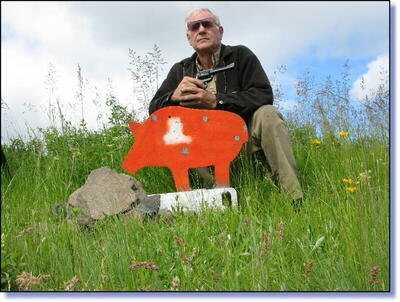


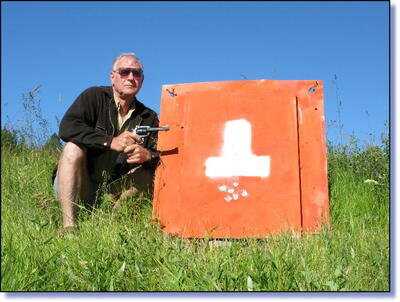
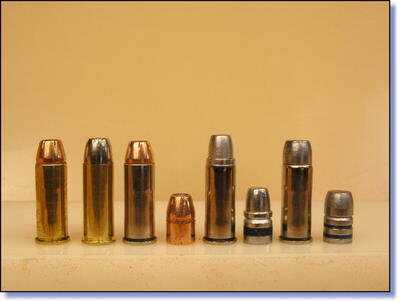
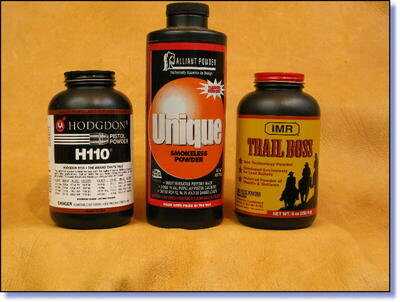
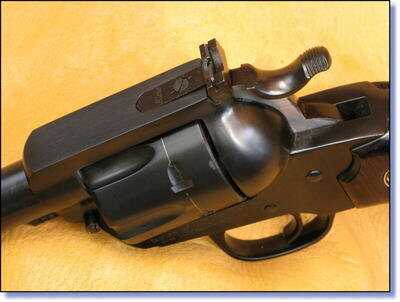
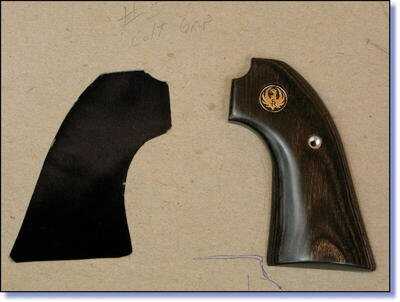

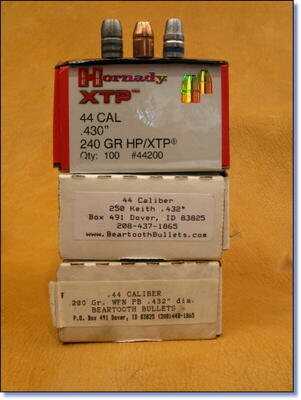
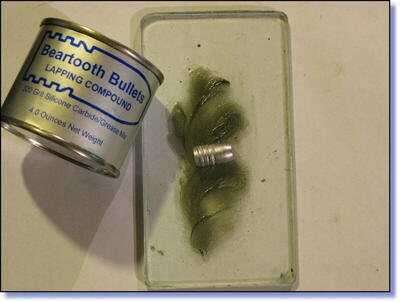
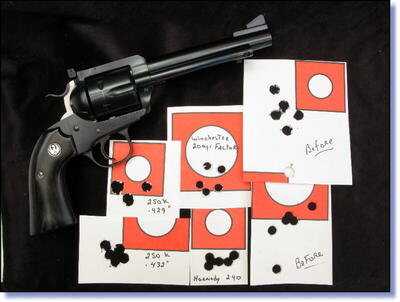

I loaded 15.2 of 2400 with a federal standard (150) primer behind my own 429421. I shoots groups as well as I can see open sights at 50 yards. Under 2″ is common. There may be even more accurate loads, but I am lazy enough that if a revolver shoots a couple of groups a shade over an inch at 50 yards, I call it good enough. Any better that that would be a waste for me in any real world field position. I have not clocked it, but would guess around 1000 fps.
I was cleaning up all my old stored reloading components and discovered 200+ empty 44 Special cases. I have never owned a 44 Special and have no idea why I had these cases. Must have found them at the range years ago. So I googled 44 Special and found Ross Seyfried’s wonderful article on the new Lipseys Bisley 44 Specials. Instantly I knew why I had those cases! They belong in my own Bisley Flattop. A quick check online and I found a 4 & 5/8s used one at a great price.
Thank you Mr. Seyfried!!!!
regarding 30,000 psi loads. these guns will eat them just fine. the mid frame cylinder in 44 special has the same wall thickness as the full size blackhawk in 45 colt. nobody thinks a full size blackhawk would grenade with 30,000 psi loads. i have used Mr. Seyfreid’s 240 xtp load and it put the deer i shot with it down as quick as anything i have shot deer with. this was a great article as are all of his articles. i think Mr. Seyfreid could write about paint drying and it would be great read.
If Ross takes the time to answer a question, you will then have the CORRECT answer. It is indeed just that simple.
John K. Benfield, III
If Ross takes the time to answer a question, you will then have the CORRECT answer. It is indeed just that simple.
John K. Benfield, III
I’m amazed that none of the previous posters thought it was unusual that a $600 “target” pistol was only capable of 3″ groups at 25 yards! Instead of cursing Ross Seyfried they should be raising hell with Ruger for allowing such an abomination to get out of the factory in the first place.
I finally got one of these for myself (here in California that was a bit of a trick) and so have been putting more thought into them.
One of my concerns is strength. The “Skeeter load” of 7.5 grains Unique with the 250 grain Keith SWC is well within its limits, but the original “Keith load” of 18 grains 2400 (or 17, considering the slightly faster burn rate of today’s 2400) gives me pause. I know that it is pushing the limits of the Colt SAA – most of them can handle it, but the occasional gun will bulge at the cylinder notches. But according to the “Gunblast” link Mr. March provided, the Ruger cylinder is of larger diameter than the original Colt. Combined with modern metallurgy, it would seem that the Keith load should work – and that Mr. Seyfried’s lower-pressure loads with H110 should give a real margin of safety.
I’m still not sure about using the Keith load with this gun – it’d be hard for me to replace it. But I’m confident enough in Seyfried’s loads to give them a try.
Noel
I purchased a 4 5/8″ std FTBHK a few days just before you did. I just had a chance to shoot it this weekend. My load was 6gr of IMR 700X with a 250gr 429421 bullet. This is a tad warmer than the 13,800 cup max according to Hogdon’s website, but in no way of any danger of harming a Ruger. I expect it is probably pushing somewhere between 850-950fps and it’s accuracy out of a brand new barrel with no prep other than cleaning the factory oil out of it is phenominal. I have used 7grs in 44 magnum for years and 700X is my go to powder for upper midrange big bore loads.
It just kills me some of the “commentary” on here lecturing Mr. Seyfried about pressures, etc. and the Bisley’s ability to handle them as well as the history of the .44 Special. I have just put in my order for the 5 1/2″ version. Ross Seyfried is a protege of Elmer Keith and his writing and knowledge are unsurpassed in the firearms world–anyone that calls him a moron, retard, etc. is not smart enough to be handling firearms in my opinion.
The .44 Special was available in black and smokeless for many years after its 1907 introduction. This is verified in several books I own, including Six Guns by Keith and Speer Reloading Manual #9. It’s also verified by a box of UMC balloon head .44 Special brass sitting on a shelf in my reloading room.
It’s been my experience, Mr. Bullen, that the cure for ignorance is an open mind and a closed mouth. Hurling insults at people who know more about a subject than you do is not nearly as effective.
I was not aware that the 44 special was a very old black powder cartridge. Actually I was under the impression that it was one of the first designs specifically for smokeless powder and introduced by S & W in the triple lock. Also, the 44 Special never had “balloon head brass” (that is 45 Colt). This guy is a MORON and should not be giving advice on reloding anything except viagra. 30,000 cpu. what an idiot.
black powder 44 special? balloon head brass? what a complete FN retard.
You sir would be completely wrong. For a couple years the 44 special WAS LOADED WITH BLACK POWDER and for the first 40 years or so WAS OF BALLOON CASE CONSTRUCTION.
This is attested to by dozens and dozens of authors including Elmer Keith himself.
There is little doubt that the Blackhawk could withstand 30k CUP. The cylinder of the Flattop is only 30 thousands narrower than a N-Frame S&W, and the bolt notches are cut off center making the cylinder thinker at its weakest point. N-Frame S&Ws are chambered in 44 MAGNUM so withstood 40K cup plus whatever safety factor, probably 60K or so.
I’ve always been able to learn some thing from Mr. Seyfried’s articles, and appreciate his concise style of writing. Great article!
Mr. March,
You have some good points. Keep in mind though, while the diametrical difference between .44 and .45 calibers is minimal, the difference in the total area exposed to the pressures you mention is exponentially higher. I haven’t, and won’t do the math, but between that fact, and the related exponential difference in cylinder strength, it would seem that the Ruger 44 FT should hold up fine. Granted, a diet of 20,000 high power loads a year may not be advisable, but if a Ruger is known for anything, it’s strength. It seems that their liabilty lawyers have an extraordinary amount of input during the design stages, for better or worse! 🙂
FIrst Mr.Seyfried, it is an honor to correspond with you. You are a gentleman, and a very knowledgeable writer. I want to say that the Ruger Bisely 44 special WILL handle Elmers load with no problems. Cases fal out of the cylinder, no sticking there. Groups in my friends have been 1 and a ahlf at 25 yards, with Elmers 429421 bullet and 17 grains of 2400. Yes it perks, but is far nicer on the hand thn a full bore 44 mag.
The grip frame is a little longer than Elmers gun, and slightly narrower , with less curl at the bottom front, but is a definite improvemant over anything else out there. I wish Colt would make a No.5. Then All would be right in the world.
Thank you for the writing up of the fire lapping. Excellent. I did that to my Sharps, and brought the grops down to 1 inch at 100 yards. That is with 10 shots. Yes I LOVE that gun. May you have powder smoke in your lungs for years to come
Ross Seyfried……
I enjoyed the article you did on the reconditioning of the “Baby” Gibbs Farquharson. Was this your project and do you own the rifle? I’ve been trying to find a Best Quality minature farquharson but with no luck so far. Agin a great article in Double Gun Journal.
Jeff Sanner.
Wonderful article, BUT…ummm…Mr. Seyfried, you DO realize this gun is built on the mid-frame Ruger SA platform and not the large-frame?
In 45LC the mid-frames are good for 20k to 21k tops. In 357Mag they can handle the older SAAMI spec of 43.5k I think it is, no problem – Buffalo Bore and DoubleTap Ammo sell 357 loads maxing out at around 800ft/lbs of energy at that pressure range.
But in 44Spl, I’m not sure the Ruger mid-frame should be fed 30k PSI loads. Certainly not in any quantity. The cylinder walls in the 44 version aren’t all THAT much thicker than they are in the 45LCs.
Here’s a page from 2004 reviewing the very first Ruger mid-frame 45LC, the New Vaquero – note the comparison photos between the smaller mid-frame cylinder and the large-frame 45 cylinder (the one rated for 30k loads):
http://www.gunblast.com/Ruger-NewVaquero.htm
Clearly the smaller cylinder isn’t going to cope with 30k for very long (if at all)…and that’s the size cylinder we’re dealing with on the 44Spl.
Mr. Seyfried…you DID realize this, right?
Jim March
I know this is an old article, but I had to respond anyway. Jim, I’m sure Ross was/is aware of everything you just alluded to. If you look at Brian Pierce’s article about the 44 special, he lists “category 3” loads of up to 25,000psi at just under 1200 fps with a 240 grain bullet, and these loads are pretty similar to the loads Ross uses here, and are perfectly safe in the midframe 44s. Note also that Ross said nothing about the loads he used reaching that 30,000psi threshold, he just quoted 30,000psi as a “reasonable number”, according to Hodgdon. I might also add that, having known Ross since the 1980’s, I will happily hang my hat on whatever he puts to print with full confidence.
I can not say enough about Ross Seyfried’s writing . I have never read one of his articles that I did not learn something. I remember years ago Mr. Keith mentioning Ross in Guns and Ammo. I think Ross started writing about that time. I met both of these men and I have fond memories of that. Larry Berry
Boy you must be a really old man, the first thing to go is your memory………………
THIS IS THE KIND OF WRITING I LOOK FORWARD TO.NO ONE OUT THERE CAN COME CLOSE TO SEYFRIED’S WRITING.MY NEW BISLEY 44 4 5/8TH IS ON THE WAY AND THE MELTING POT IS HOT. THANKS
Great Article! Very informative and extremely interesting. I have been a Ruger fan for some time now, but of the 41 mag.
I also believe bigger is better with the bullets and I just LOVE the Hornady XTP. Thank you for some great info!
I am very much looking forward to your complete story of fire lapping. I hope you come out with it soon.
One of the very best writings I have seen in a long time on how to get the most from the handguns. Simply great stuff and hope we get a very good story on the barrels and how to get max accuracy from them. Long time fan of Bisley Models, my dad taught me big hand guns shooting with a Colt Bisely in 455 Webley, the gun went missing when my brother died, but miss the ole beast. Simply one of the best hand guns out there for accuracy and taming recoil, Bisley is a great shooter and his tips on how to make them even better is best stuff on handguns written in a long time. Keep up great work, we need more stories like that so future shooters will see there is a lot of science behind the guns, not just noise and what seems a bit to zealous about guns by some. This is what shooting is all about. So more on the way?
I’m getting ready to bu a used Ruger Super Redhawk .44 Mag. Can you only lap a brand new gun?
Once again I am entertained and educated by Mr. Seyfried’s writing. I have witnessed his skills with a pistol in competition at Ray Chapman’s in Missouri during the prior century, and I found that he did things with a handgun I could only aspire to. Thank you Sir!